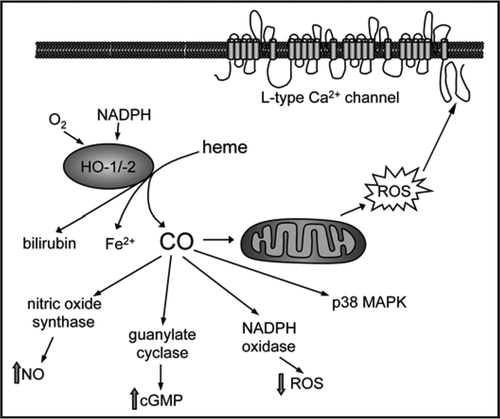Figures & data
Figure 1 Schematic illustrating the synthesis and effects of carbon monoxide (CO). CO is generated by the O2 and NADPH-dependent catabolism of heme by HO-1 and HO-2. CO can stimulate or inhibit a number of signalling pathways, as illustrated. Of particular relevance to our studies, CO can bind to complex IV of the mitochondrial electron transport chain, leading to electron leak from complex III. This permits increased production of reactive oxygen species (ROS) that in turn leads to modulation of L-type Ca2+ channel activity via interaction with three cysteine residues located in the cytoplasmic C-terminal of the channel's α subunit.
